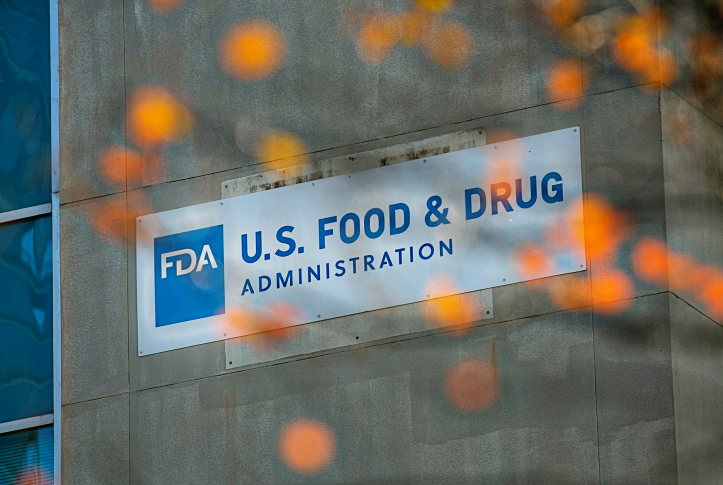An important conversation is emerging on how public and private insurers pay for prescription drugs with limited clinical evidence. This discussion is focusing on drugs approved under the U.S. Food and Drug Administration’s (FDA) accelerated-approval program, in which drugs can come to market without clearly proving health outcomes. A primary concern is that insurers and government are paying high prices for drugs that have not demonstrated they improve health outcomes for patients. Policymakers are considering options to create financial incentives for manufacturers to more quickly complete confirmatory studies that show drugs can advance health and well-being.
The Medicaid and CHIP Payment and Access Commission (MACPAC) is considering a proposal to recommend increasing rebates to Medicaid on drugs that receive the speedy approvals. This rebate is paid by the manufacturer and lowers the net price of the drug. In addition, regulators at the FDA are taking a second look at drugs approved under the accelerated program after some manufacturers’ long-delayed confirmatory clinical studies failed to demonstrate improvements in health outcomes. These developments are part of a larger discussion on how to address high prescription-drug pricing when there is limited or no clinical evidence to support prices set by manufacturers.
This blog post examines the current accelerated-approval program, along with current recommendations for reform and other policy options for lowering the cost of drugs with limited evidence of clinical benefit.
What Is the FDA Accelerated-Approval Program?
In 1992, the FDA established a new expedited pathway to speed approval of drugs that treat serious conditions and fill an unmet need. The agency allows drug manufacturers to use “surrogate endpoints” to gain approval. A surrogate endpoint is an intermediate measure, like a laboratory test, which is a substitute for a clinical endpoint used to measure health outcomes, such as longer survival times. Once a drug receives conditional approval from the FDA, the manufacturer is required to complete studies that confirm the drug’s demonstrable effect on health outcomes to receive standard approval. Congress codified the program into law in 2012.
To date, the FDA has granted 253 accelerated approvals. The program has expanded over time. Some classes of drugs, including those related to oncology, obtain most of their drug approvals using this pathway.
These drugs contribute significantly to drug spending. A recent analysis found that during the first half of 2020, the FDA granted 16 accelerated approvals. Accelerated-approval drugs account for a high level of spending — in 2019 Medicare spent at least $10 billion and Medicaid $1.2 billion on drugs that received accelerated approvals.
Issues with the Accelerated-Approval Program
As more drugs receive approvals through this program, researchers and payers are most concerned about the program’s reliance on surrogate endpoints as a proxy for efficacy, as well as delays in completing the confirmatory studies using clinical measures. Studies have shown that surrogate endpoints can be poor predictors for health outcomes. For example, confirmatory studies for Avastin, a cancer drug with accelerated approval, showed no improvement in overall survival and, even more concerning, poorer quality of life for patients.
Manufacturers have delayed confirmatory studies by years and many never produce the data required for standard FDA approval. Some reports found that confirmatory studies are completed an average of five years after approval, although some took 12 years. Of the 16 drugs withdrawn from the market since the program began, 11 had been on the market for 10 years before being withdrawn without evidence to demonstrate efficacy. Currently, there are nine approvals that will have been on the market for 10 years by the end of 2021 and not converted to a standard, unconditional FDA approval. The FDA’s current enforcement tool is to rescind approval if a manufacturer fails to complete the required studies; however, this rarely occurs.
How the MACPAC Proposal Addresses These Issues
The Medicaid Drug Rebate Program requires states to cover drugs approved under the accelerated-approval program if the manufacturer signs an agreement to provide the same statutory discount (23.1% for brand-name drugs), known as the base rebate, it would for drugs approved under the standard process. In addition, manufacturers are required to provide an additional discount to Medicaid if the list price of a drug increases faster than inflation, known as the inflation-based rebate.
In an effort to reduce spending on drugs with limited efficacy, MACPAC is considering two recommendations for Congress: 1) increase the size of the base rebate that manufacturers pay Medicaid until it has completed the required confirmatory studies, and 2) increase the amount of the inflation-based rebate at a certain point in time if the manufacturer fails to complete required confirmatory studies. The recommendations may incentivize manufacturers to complete postmarket studies while also providing financial relief to Medicaid for drugs with limited evidence to support efficacy.
Other Recommendations for Reducing Spending on Drugs with Limited Evidence
Medicare also spends significant funds on accelerated-approval drugs. To reduce costs, Medicare could consider the following policy options:
- Penalize manufacturers that fail to complete confirmatory studies by requiring them to pay a rebate to Medicare for accelerated-approval drugs in Part B that have not completed postmarket studies within five years of FDA approval. The penalty could be structured similar to the MACPAC recommendations.
- Require accelerated-approval drugs to be eligible for government price negotiation. The Secretary of Health and Human Services could negotiate the price for Medicare and commercial markets based on the drug’s clinical evidence and prices paid by other countries.
- Set Medicare reimbursement for accelerated-approval drugs using drugs approved with the same indication. This proposal would create a reference price using standard approval drugs.
- Increase FDA oversight and regulatory tools to ensure manufacturers comply with requirements for postmarket studies in a timely manner.
As Congress and the Biden–Harris administration consider how to tackle prescription drug pricing, these policy solutions are a good starting point for lowering the costs of high-priced specialty drugs that lack complete evidence of efficacy.




